Abstract
PURPOSE: To determine the factors associated with inadequate follow-up for abnormal Pap smears among a cohort of Boston women from urban academic clinics. METHODS: Subjects were women > 18 years with abnormal cervical cytology between February 1999 and April 2000. Inadequate follow-up was defined as lack of subsequent cervical cytology or pathology specimen within four months of the initial abnormal specimen for high-grade lesions or within 7 months for low-grade lesions. RESULTS: Of the 423 subjects, the mean age was 33 years. Sixty percent were black, 23% Hispanic, 15% white, 2% Asian. The population was largely uninsured or publically insured. The overall inadequate follow-up rate was 38%. In bivariate analysis, age was a significant risk factor; 46% of women ages 18-29 had inadequate follow-up (p < 0.01). In multivariate analysis, women aged 18-29 years were more likely than women 50 years and older to have inadequate follow-up (OR 2.7, 95% CI 1.1-6.4), as were women with Medicaid insurance compared with private insurance (OR 1.9, 95% CI 1.01-3.5). After 12 months, 26% of women with abnormal Pap smears still had not received follow-up. CONCLUSIONS: In a predominantly urban minority population, the overall rate of inadequate follow-up for abnormal Pap smears was high at 38%. Programs to address follow-up of abnormal cervical cytology should focus on minority populations, especially younger and all low-income women.
Full text
PDF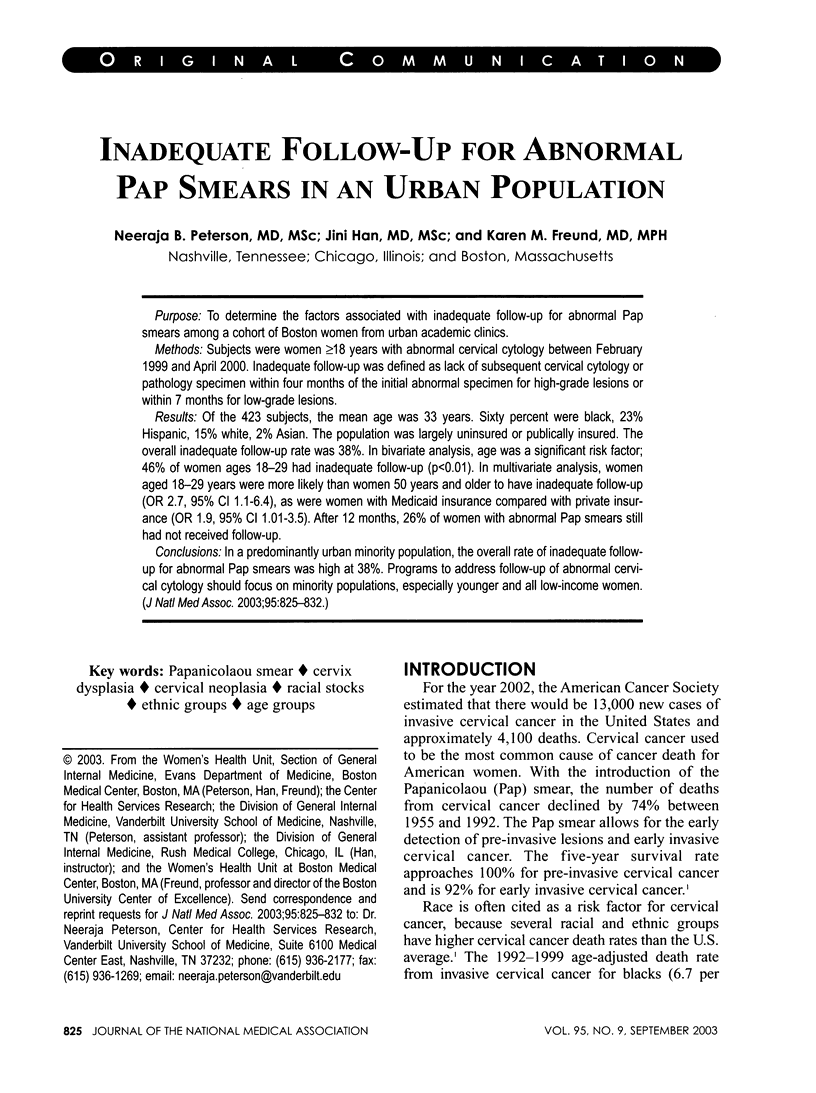
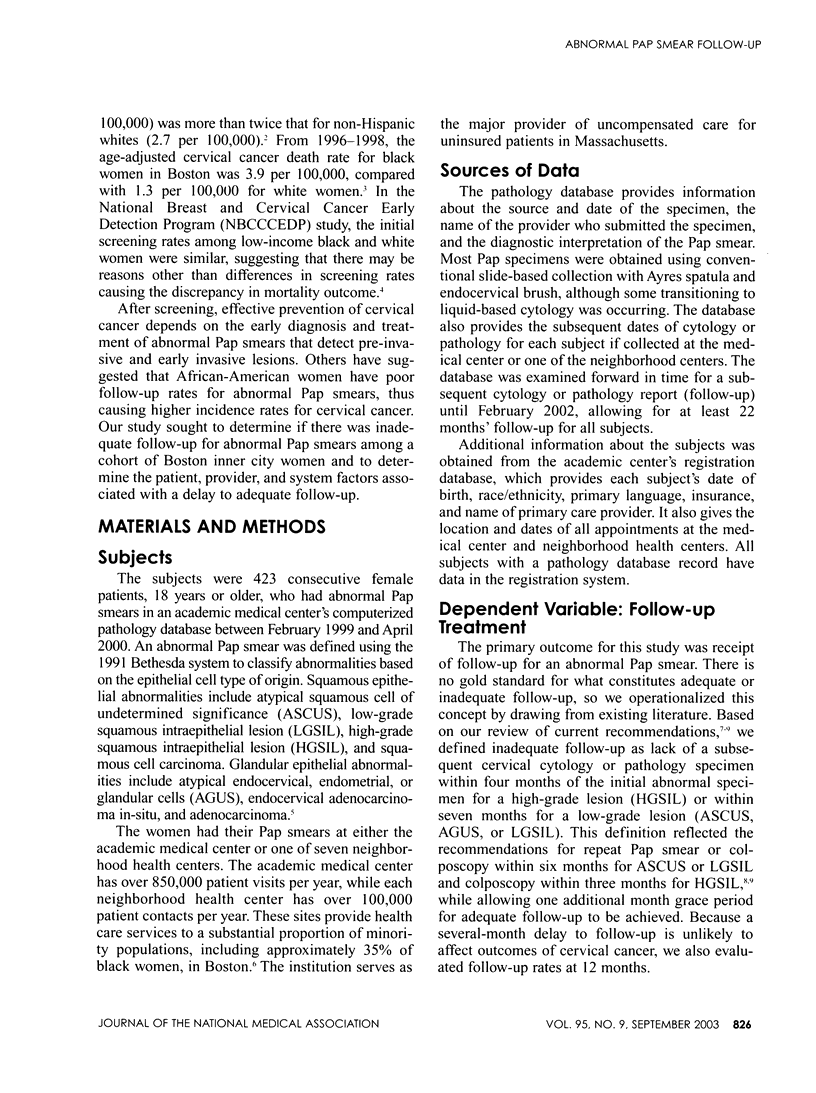
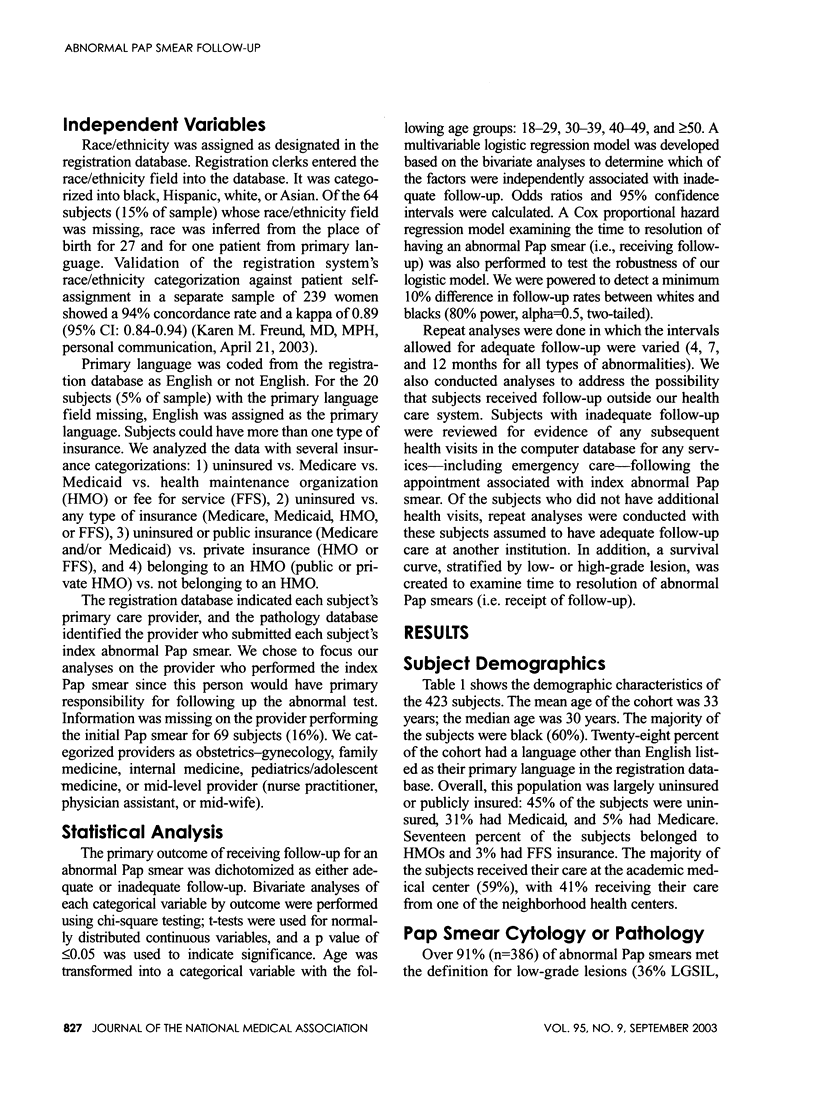
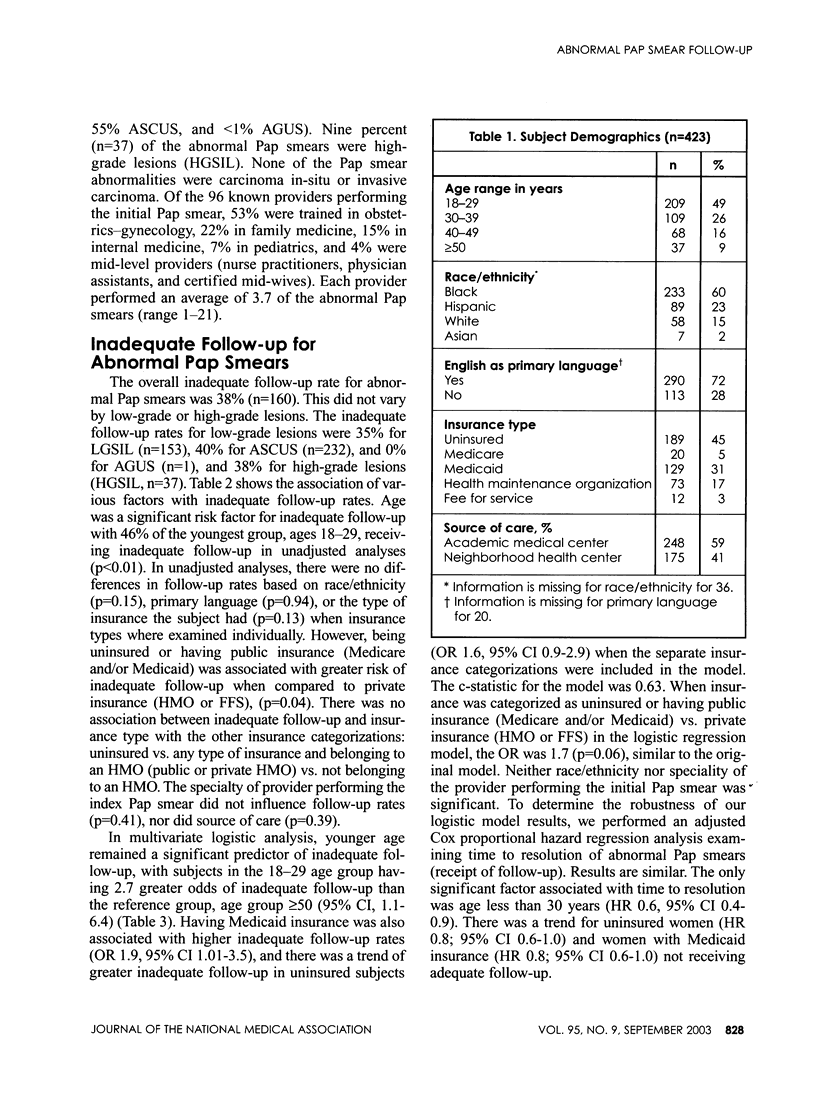
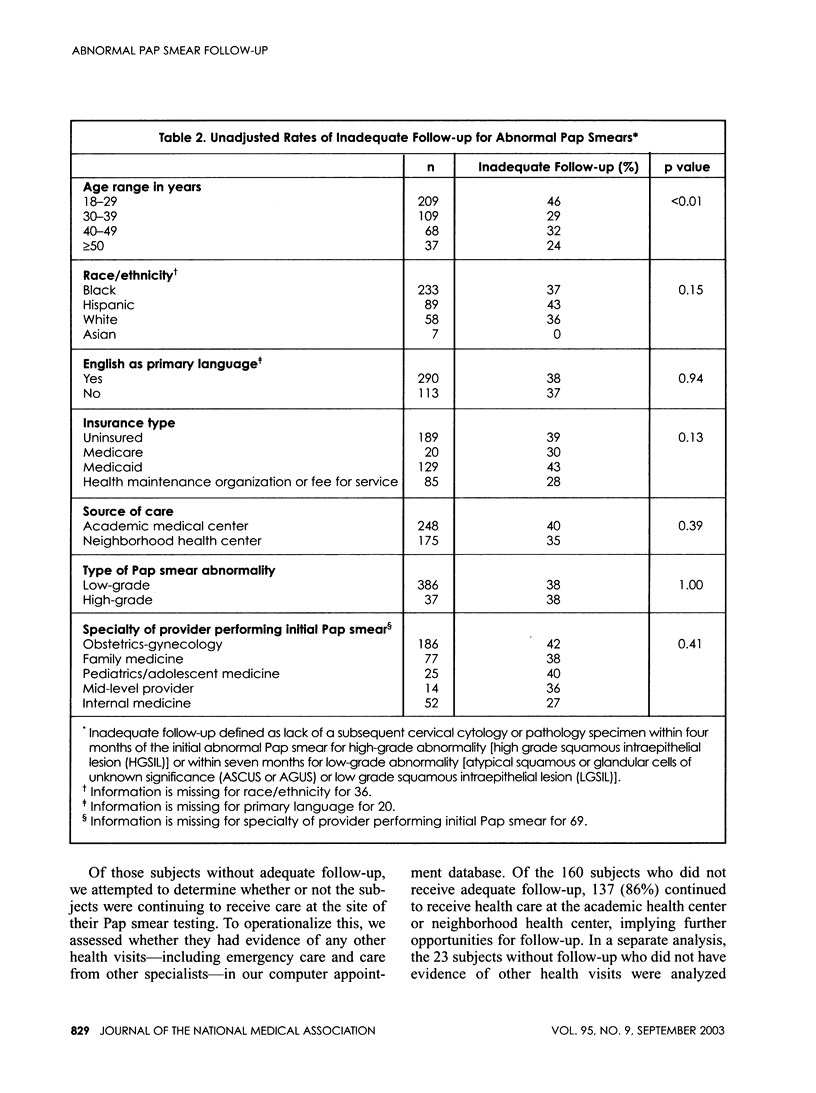
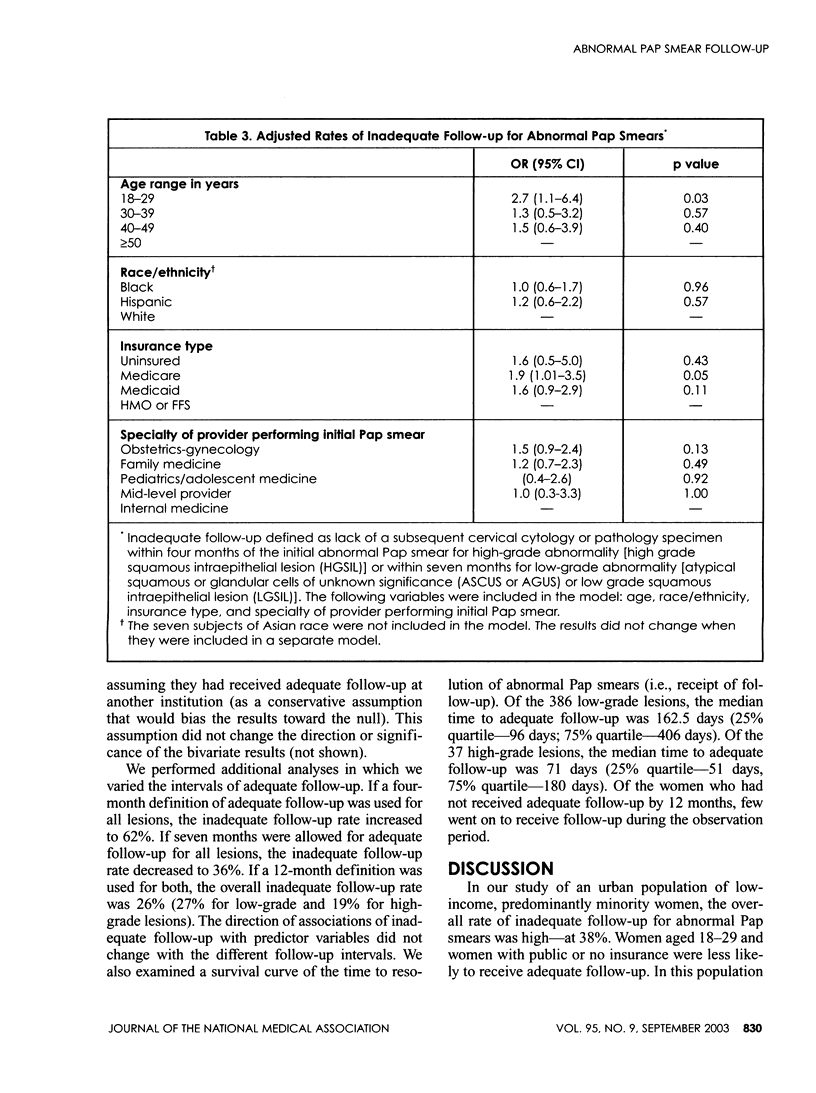
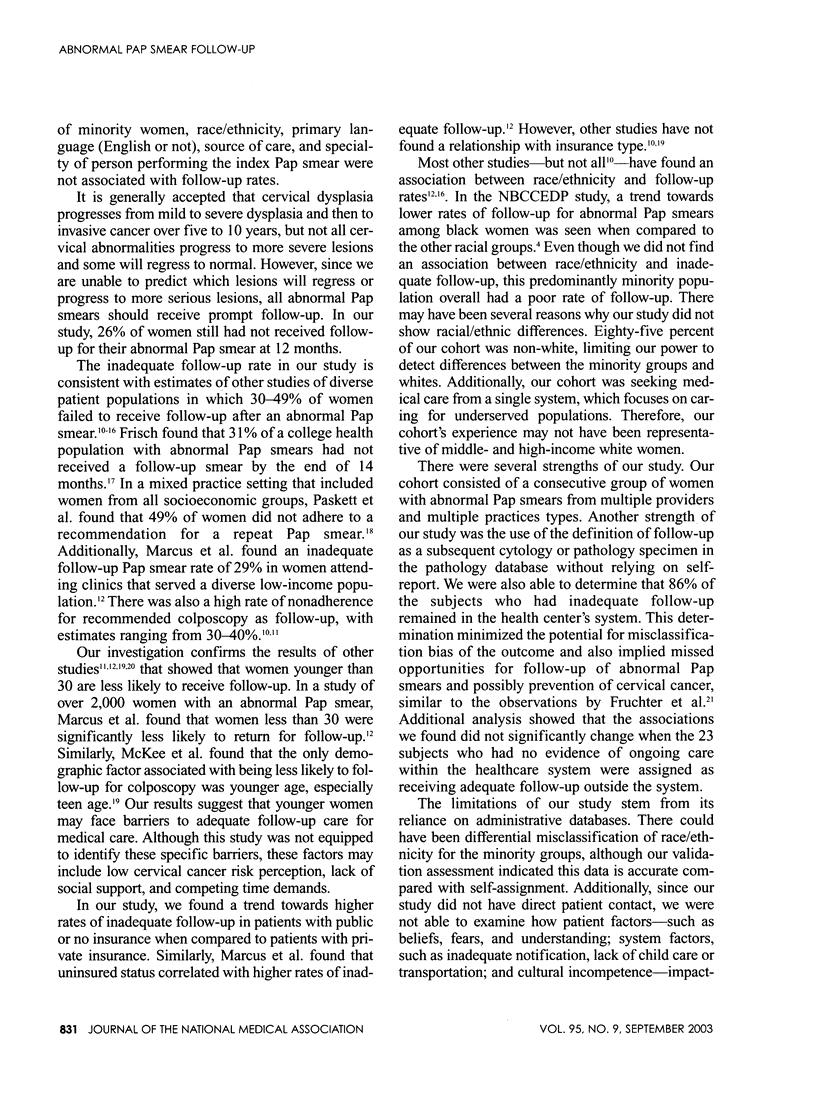
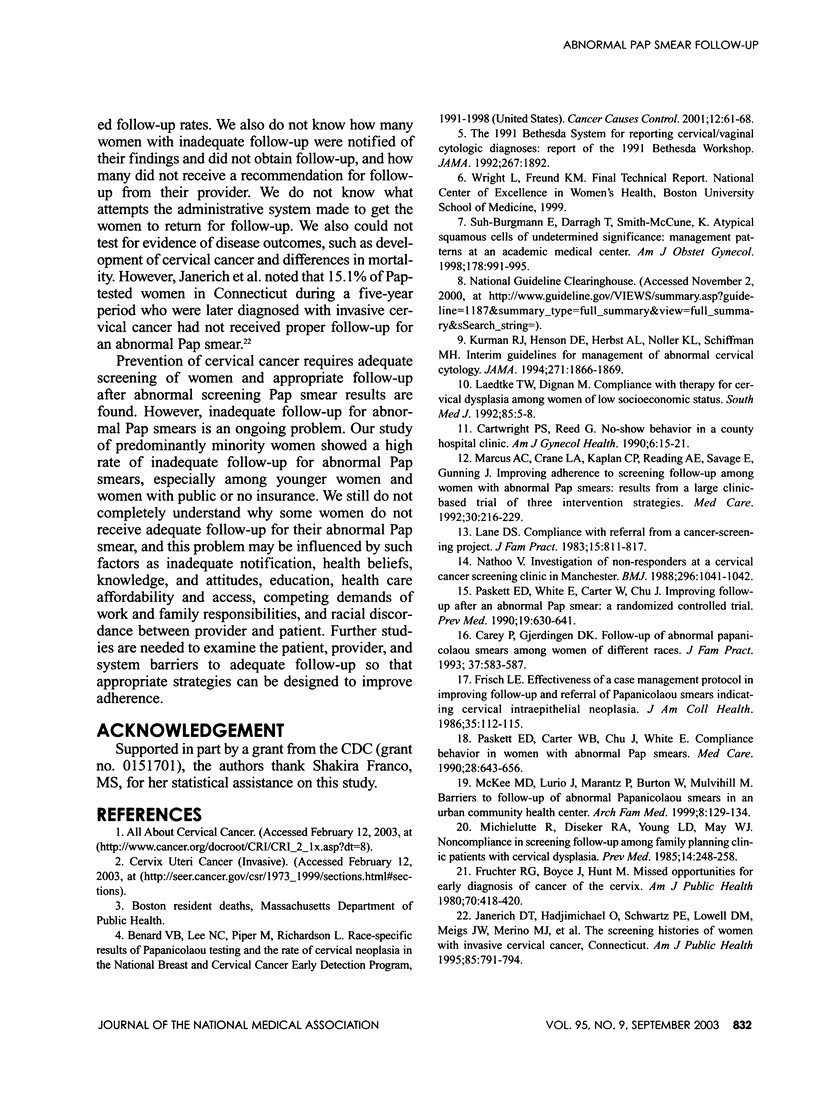
Selected References
These references are in PubMed. This may not be the complete list of references from this article.
- Benard V. B., Lee N. C., Piper M., Richardson L. Race-specific results of Papanicolaou testing and the rate of cervical neoplasia in the National Breast and Cervical Cancer Early Detection Program, 1991-1998 (United States). Cancer Causes Control. 2001 Jan;12(1):61–68. doi: 10.1023/a:1008959019019. [DOI] [PubMed] [Google Scholar]
- Carey P., Gjerdingen D. K. Follow-up of abnormal Papanicolaou smears among women of different races. J Fam Pract. 1993 Dec;37(6):583–587. [PubMed] [Google Scholar]
- Frisch L. E. Effectiveness of a case management protocol in improving follow-up and referral of Papanicolaou smears indicating cervical intraepithelial neoplasia. J Am Coll Health. 1986 Nov;35(3):112–115. doi: 10.1080/07448481.1986.9938971. [DOI] [PubMed] [Google Scholar]
- Fruchter R. G., Boyce J., Hunt M. Missed opportunities for early diagnosis of cancer of the cervix. Am J Public Health. 1980 Apr;70(4):418–420. doi: 10.2105/ajph.70.4.418. [DOI] [PMC free article] [PubMed] [Google Scholar]
- Janerich D. T., Hadjimichael O., Schwartz P. E., Lowell D. M., Meigs J. W., Merino M. J., Flannery J. T., Polednak A. P. The screening histories of women with invasive cervical cancer, Connecticut. Am J Public Health. 1995 Jun;85(6):791–794. doi: 10.2105/ajph.85.6.791. [DOI] [PMC free article] [PubMed] [Google Scholar]
- Kurman R. J., Henson D. E., Herbst A. L., Noller K. L., Schiffman M. H. Interim guidelines for management of abnormal cervical cytology. The 1992 National Cancer Institute Workshop. JAMA. 1994 Jun 15;271(23):1866–1869. [PubMed] [Google Scholar]
- Laedtke T. W., Dignan M. Compliance with therapy for cervical dysplasia among women of low socioeconomic status. South Med J. 1992 Jan;85(1):5–8. doi: 10.1097/00007611-199201000-00003. [DOI] [PubMed] [Google Scholar]
- Lane D. S. Compliance with referrals from a cancer-screening project. J Fam Pract. 1983 Nov;17(5):811–817. [PubMed] [Google Scholar]
- Marcus A. C., Crane L. A., Kaplan C. P., Reading A. E., Savage E., Gunning J., Bernstein G., Berek J. S. Improving adherence to screening follow-up among women with abnormal Pap smears: results from a large clinic-based trial of three intervention strategies. Med Care. 1992 Mar;30(3):216–230. doi: 10.1097/00005650-199203000-00004. [DOI] [PubMed] [Google Scholar]
- McKee M. D., Lurio J., Marantz P., Burton W., Mulvihill M. Barriers to follow-up of abnormal Papanicolaou smears in an urban community health center. Arch Fam Med. 1999 Mar-Apr;8(2):129–134. doi: 10.1001/archfami.8.2.129. [DOI] [PubMed] [Google Scholar]
- Michielutte R., Diseker R. A., Young L. D., May W. J. Noncompliance in screening follow-up among family planning clinic patients with cervical dysplasia. Prev Med. 1985 Mar;14(2):248–258. doi: 10.1016/0091-7435(85)90040-4. [DOI] [PubMed] [Google Scholar]
- Nathoo V. Investigation of non-responders at a cervical cancer screening clinic in Manchester. Br Med J (Clin Res Ed) 1988 Apr 9;296(6628):1041–1042. doi: 10.1136/bmj.296.6628.1041. [DOI] [PMC free article] [PubMed] [Google Scholar]
- Paskett E. D., Carter W. B., Chu J., White E. Compliance behavior in women with abnormal Pap smears. Developing and testing a decision model. Med Care. 1990 Jul;28(7):643–656. doi: 10.1097/00005650-199007000-00009. [DOI] [PubMed] [Google Scholar]
- Paskett E. D., White E., Carter W. B., Chu J. Improving follow-up after an abnormal Pap smear: a randomized controlled trial. Prev Med. 1990 Nov;19(6):630–641. doi: 10.1016/0091-7435(90)90060-w. [DOI] [PubMed] [Google Scholar]
- Suh-Burgmann E., Darragh T., Smith-McCune K. Atypical squamous cells of undetermined significance: management patterns at an academic medical center. Am J Obstet Gynecol. 1998 May;178(5):991–995. doi: 10.1016/s0002-9378(98)70537-x. [DOI] [PubMed] [Google Scholar]


